The History of Basketball Shoes
The Early Days
With countless brands and colors available, it is easy to take today’s wide selection of basketball shoes for granted. However, basketball players didn’t always have the benefit of choice.
In the very early days of basketball (the days before the 1920’s), when games were sometimes still being played on neighborhood stages before evening dances, there was no such thing as basketball sneakers. The evolution had yet to begin.
No company had yet to capitalize on that niche, so various types of footwear adorned players’ feet. These included rubber-soled Keds (generically marketed for sports) and leather hightops
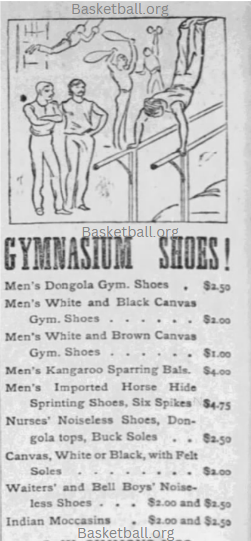
1890 Advertisement
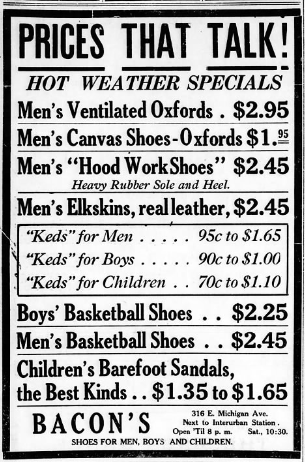
1919 Advertisement
Shoes Made for Basketball
In the following decades, while Keds and other knockoff brands competed with Converse, no one could match their market share. It is estimated that, in 1960, roughly 90% of all college and professional basketball players wore Converse.
In 1969, however, Converse’s dominance would be challenged by a new entry to the sneaker market: Adidas’ Superstar sneakers. With a genuine leather upper sole, herringbone traction providing a stable bottom grip, and a cool design, the Superstar was a hit among NBA and recreational ballers alike. Endorsements by Kareem Abdul-Jabbar, Jerry West, ‘Pistol’ Pete Maravich helped propel the sneaker to mainstream popularity, marking a significant moment in the evolution of basketball shoes.
A few years later, in 1973, the suave Walt ‘Clyde’ Frazier debuted the Puma “Clyde’s,” a stylish addition to the basketball sneaker market at a time when many sneakers were still utilitarian in nature.
Building on the introduction of stylish sneakers, Pony sneakers, then worn by ‘Chocolate Thunder’ Darryl Dawkins and David Thompson, burst onto the scene. While they are not typically worn today as basketball shoes, they enjoyed popularity in the NBA (and among early rappers) until the 1990’s.
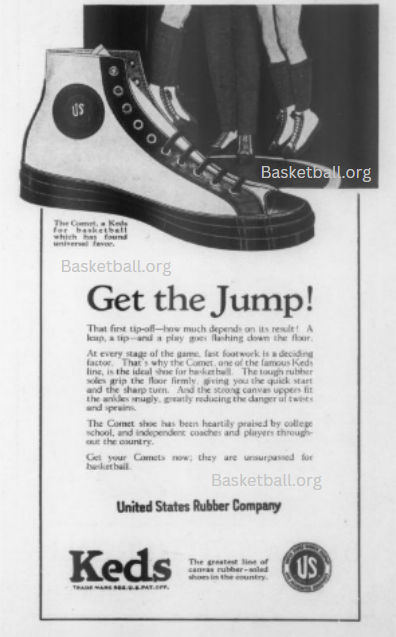
1924 Advertisement
Some Early Converse Advertisements
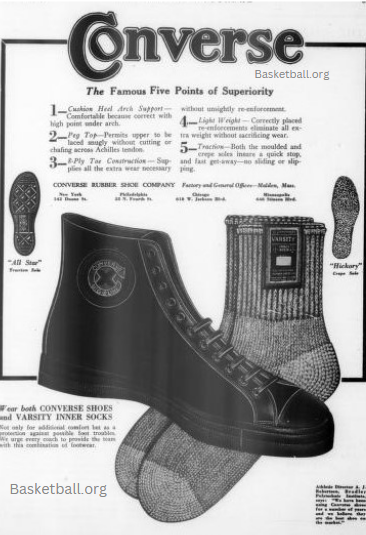
1927 Converse Ad
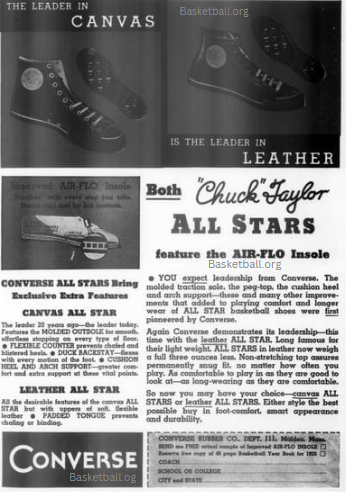
Early Chuck Taylor Ad
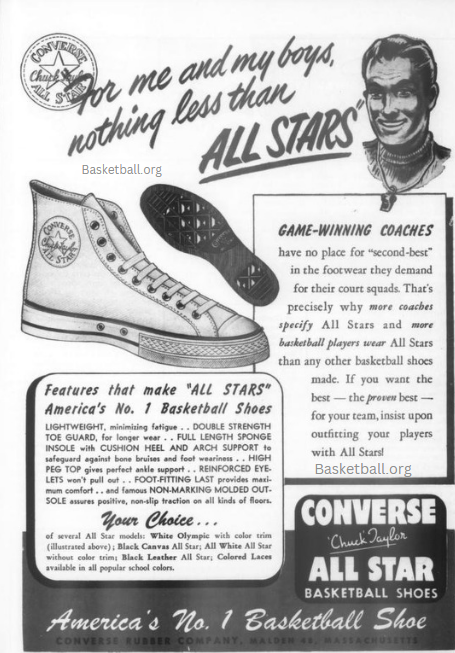
1950 Chuck Taylor Ad
The Growth of Basketball – And Basketball Shoes
In the following decades, while Keds and other knockoff brands competed with Converse, no one could match their market share. It is estimated that, in 1960, roughly 90% of all college and professional basketball players wore Converse.
In 1969, however, Converse’s dominance would be challenged by a new entry to the sneaker market: Adidas’ Superstar sneakers. With a genuine leather upper sole, herringbone traction providing a stable bottom grip, and a cool design, the Superstar was a hit among NBA and recreational ballers alike. Endorsements by Kareem Abdul-Jabbar, Jerry West, ‘Pistol’ Pete Maravich helped propel the sneaker to mainstream popularity.
A few years later, in 1973, the suave Walt ‘Clyde’ Frazier debuted the Puma “Clyde’s,” a stylish addition to the basketball sneaker market at a time when many sneakers were still utilitarian in nature.
Building on the introduction of stylish sneakers, Pony sneakers, then worn by ‘Chocolate Thunder’ Darryl Dawkins and David Thompson, burst onto the scene. While they are not typically worn today as basketball shoes, they enjoyed popularity in the NBA (and among early rappers) until the 1990’s.
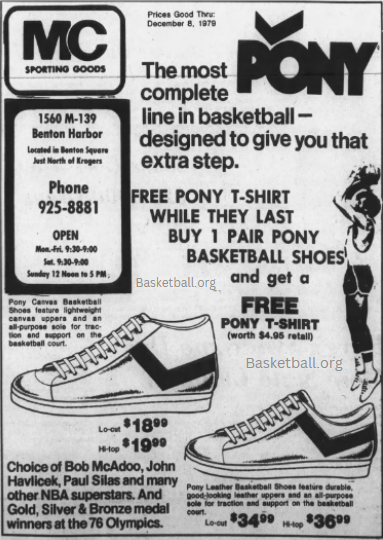
Nike Changes Everything
No discussion of Pre-Jordan basketball shoes would be complete without touching upon Nike’s entrance into the market. Nike’s 1973 release of the Blazer (now commonly used as skateboarding shoes) and Bruin in leather (they were later released in suede and canvas) marked the beginning of an era, contributing further to the evolution of basketball shoes.
However, it was not until the 1982 release of the Nike Air Force 1’s (worn by Moses Malone and Jamal Wilkes, among others), that Nike truly became a force on the basketball sneaker market.
The mid-1980s were the beginning of the “sneaker wars” that included Nike, Converse & Reebok.
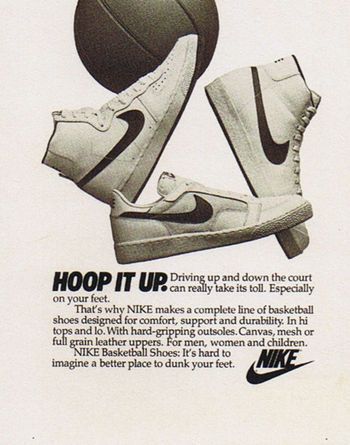
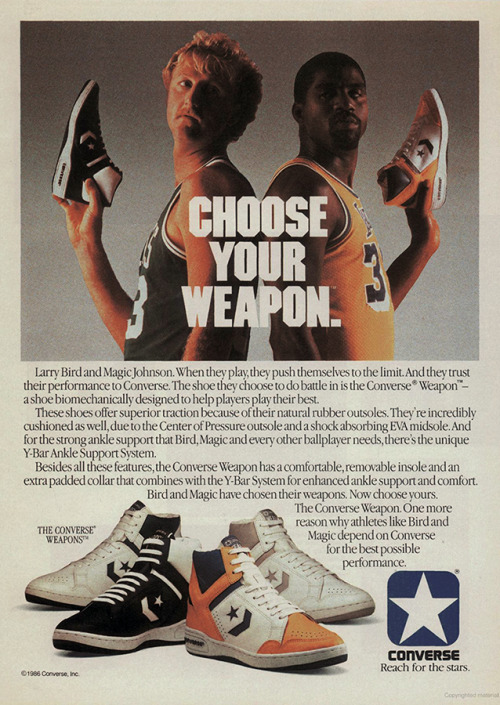
Vintage Basketball Commercials
Converse Weapon NBA Stars 1986 Commercial
1991 Reebok “Dennis Rodman, Pump Basketball Shoes” TV Commercial
Michael Jordan Air Jordan 1 commercial
Quick Links:
© Basketball.org | All rights reserved.
Powered by WordPress